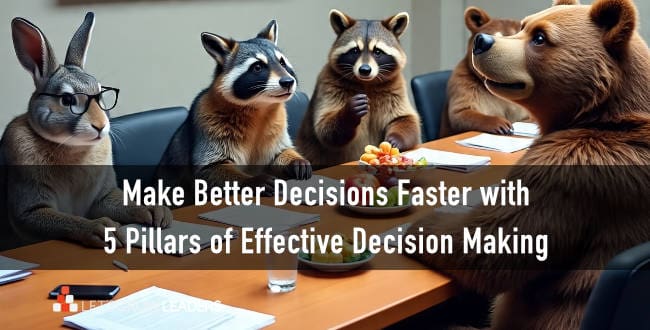It takes compassion and strength to fire a poor performer.
Have you ever been reluctant to fire a poor performer? You might identify with Mary.
She approached David as he finished delivering a leadership development program and introduced herself. “I was the vice president of a well-known technology company, and I consistently did everything you just talked about—with one exception. I let people stay who weren’t right for the team.”
David replied, “You’re not alone. That’s a difficult challenge for most managers.”
Mary frowned. “Yes, it is. It’s also why I said ‘I was the vice president.’ I lost my job because I didn’t practice adequate accountability. Please make sure people know how important this is. Tell them Mary said so.”
Well, Mary—this is for you.
Firing someone is one of the most difficult things most managers ever have to do. Even so, the decision to fire a poor performer is an important aspect of your leadership. Removing poor performers tells your top performers you value their time and effort.
When you remove troublesome individuals, you help everyone be more productive—especially you. In our experience, a troublesome poor performer can soak up 80 percent of your time when you don’t take proper care of the situation.
So yes, there will come a time when you need to fire a poor performer.
Now, it may feel easy to fire someone you’ve never cared for, who treated you and everyone else rudely and abused customers, but what about when you like the person? You’ve grown close over the years. You care about her. You might even know her family. Perhaps she’s even a strong performer who did something stupid. Now you need to fire her. How do you get okay with that?
How to Be Okay When It’s Time to Fire a Poor Performer
It’s okay for these decisions to be tough. This isn’t a bad thing—you should take it seriously. Dick Saunders, the Founder and CEO of Saunders Construction once told us in an interview, “If you ever reach a place where you can affect a person’s livelihood and family without a second thought, then it’s time for you to resign.”
You might feel like you don’t want to hurt the person or his family. If you’re a Pleaser Manager, you want people to like you. Even Users can procrastinate on these decisions. To move past this paralysis, you’ll need to change your mindset.
When you manage, there will come a time when you realize a person is no longer committed to the mission and is not, or never was, a good fit for the organization. In these situations, you want to be sure you’ve made reasonable efforts to help her (reinforce expectations, alert her to the issue, provide any needed training, and practice your company’s due process if it has one).
If you’ve done this and it’s clear that the person needs to move on, the most important thing you can do for your team, for your own credibility, and for the employee is to help her go.
Don’t do it because other people think you should, don’t do it because you’re angry, and don’t do it to avoid other problems. When you terminate, do it because it is best for the team, the organization, and that employee.
Not Everyone Belongs Here
One mindset to embrace before you can help your people achieve results together is that not everyone should be a part of every team.
The human being in front of you has strengths and value—strengths and value that just don’t work for his current position.
Karin worked with an HR manager who had lots of big ideas but constantly suffered in execution. After a year of reviewing expectations, performance-improvement planning, training, and straight talk, she had to let him go. A year later he called her and said:
“Thank you. Getting fired was one of the best things that ever happened to me. I’m working on my Ph.D., teaching, and consulting. In hindsight, I should have quit, but I was too scared about what to do next. This forced me into needed action.”
If you need to fire someone, it doesn’t really matter if she did something wrong or isn’t an ideal fit. We’re talking about a mindset you bring to the process: This isn’t about them as a person – it’s facing the reality that not everyone should be a part of every team.
When You Fire a Poor Performer, You Serve Them Too
One of the most important pieces of the decision to fire a poor performer is your awareness that you serve the person you let go.
This is a vital part of knowing how to say goodbye: realizing that you don’t do an employee any favors by tolerating poor performance, mission misalignment, or abuse of coworkers.
When you refuse to help someone move on, you actually hurt them.
With mission misalignment, if you don’t say goodbye, you keep the person from learning more about his strengths. When you tolerate negligence or abuse, you enable poor behavior and prevent the individual from learning how to succeed in the real world.
In either case, while it’s not pleasant, it can definitely be an act of caring if your motivations include both what is best for the individual and on what is best for the organization.
Your Turn
Don’t allow your lack of courage or your discomfort to hurt your poor performers and your good ones. Great managers know when and how to say goodbye because they recognize that in doing so, they express how much they value their team, for the mission, and even for the departing staff member.
We’d love to hear from you: leave a comment and share your experience – either the consequences of a poor performer who stayed too long or a leader skilled at moving people out of poorly matched roles.
For more, check out this video from Karin on what happens when you leave a toxic manager in their role:







0 Comments